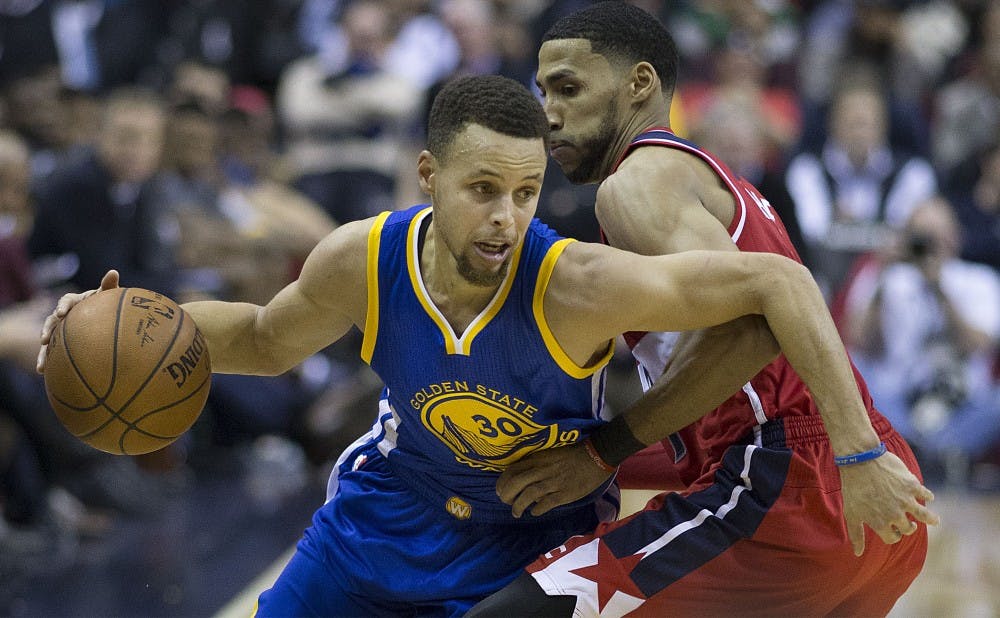“We’re light-years ahead of probably every other team in structure, in planning, in how we’re going to go about things.”
When venture capitalist and majority owner of the Golden State Warriors Joe Lacob touted his team as “light-years ahead” in a profile for New York Times Magazine March 30, owners around the NBA had mixed reactions.
In the midst of what will go down as the best regular-season in NBA history, Lacob’s not-so-subtle reminder was the last thing general managers wanted to hear after watching their squads struggle mightily on the court against the juggernaut Warriors. Finding a way to contain reigning NBA MVP Steph Curry and his All-Star teammate Klay Thompson, along with the boisterous Draymond Green and a complement of dangerous perimeter shooters, remains a puzzle that only a handful of teams in the league appear capable of solving.
But to claim to be in another stratosphere as an organization seems to be a stretch, even considering the Warriors 73-9 feat—a record that I never imagined possible even in my wildest dreams.
The team’s upward trend began with the now-heroic decision—one made by the regime before Lacob’s—to take Curry with the seventh pick in the 2009 draft, despite questions about his size and durability translating to the next level. After inheriting a team with both Curry and Thompson—who was drafted 11th in the 2011 draft—Lacob and general manager Bob Myers followed it up in 2012 with what may go down as the greatest draft by any NBA team in history, with the Warriors coming away with Green, forward Harrison Barnes and center Festus Ezeli.
Yet the fortune of good luck and spot-on timing has always appeared to carry the Warriors when threats were made to the NBA’s newest emerging dynasty.
With concerns about Curry’s health and the durability of center Andrew Bogut in the summer of 2013, Lacob’s team pursued big man Dwight Howard—yes, the same Dwight Howard who now appears content to start his offseason early by meandering aimlessly in the paint for the Houston Rockets.
It seems like a distant memory now, but the Warriors also came close to pulling the trigger on a trade centered around Thompson and forward Kevin Love in the summer of 2014. If not for a greedy Minnesota Timberwolves front office looking for more in the package and a shrewd demand by board member Jerry West to keep Thompson, the Splash Brothers as we now know them may have never become a spectacle.
When injuries have struck the Warriors, it seems that things have always turned out well for the team. Without an injury to forward David Lee—who was traded by the team last summer—Green would have been hard-pressed to enter the rotation. After all, a subpar training camp a year ago convinced head coach Steve Kerr that the forward was only worth 10 to 12 minutes per game before Lee’s strained hamstring paved the way for more playing time.
Along the way, the NBA itself entered the small-ball revolution—one often attributed to Curry and the Warriors, but that actually originated with the 2012-13 Miami Heat, which played LeBron James heavily at both the four and five positions. The following year, the San Antonio Spurs—who, ironically, remain the biggest threat to the Warriors' championship aspirations—used a now-famous pace-and-space attack to eviscerate the Heat with crisp ball movement to create open shots on the perimeter.
All of a sudden, a Warriors team that had trouble getting past the Los Angeles Clippers in the first round of the playoffs in 2014 found itself with the ideal roster to compete for multiple championships.
As has become customary in sports media today, an article doing anything but lauding Golden State's success in the past two seasons is bound to receive a slew of “Warriors hater” comments. Yet, I sincerely acknowledge just how impressive the teams’ accomplishments are to date and the tremendous job the organization has done building a complete roster.
The biggest statement made in favor of Lacob’s sentiment was made on the court Monday night, when the Warriors took the floor without Curry—who suffered an ankle injury in Game 1 of their first-round series—and still made quick work of the Rockets in a 115-106 victory. Personally, picturing the Warriors succeeding for extended periods without their transcendent superstar is nearly impossible. An ankle twisted by few inches could be the difference between “light-years” and a team that is at the same level as many of its competitors.
If Lacob’s Warriors are just as far ahead as he says they are, he above all should know that it hasn’t been exclusively by his doing and the team has received some favorable bounces along the way.
With Curry, the Warriors are far and away the class of the league and the favorites to bring home the NBA title. But they’ve been beaten and they still can be beat in a seven-game series with the right balance of experience and depth.
Get The Chronicle straight to your inbox
Signup for our weekly newsletter. Cancel at any time.

